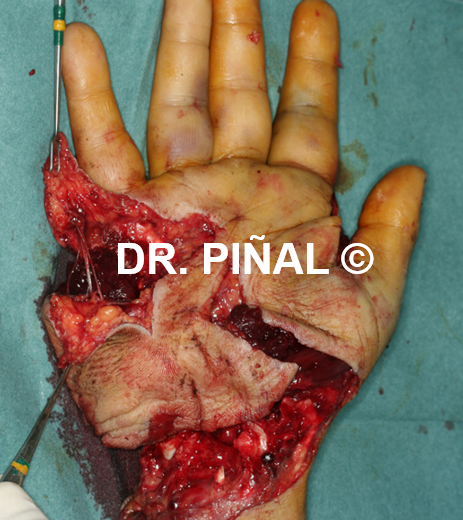Young male with a picture of nerve injuries from accidental hand crush, caught in a press and in a catastrophic situation. The limb has complete cuts at two levels in the wrist, which slice the nervous, musculotendinous and vascular systems. In turn, loss of muscle by extrusion is present. Tendon transfer

The problem
A context of catastrophic hand of these characteristics implies very serious nerve injuries with loss of sensibility and motor function in a hand that, in essence, has ‘burst’. To these damages must be added a muscle mass that either has disappeared or is unrecoverable. Furthermore, in the inmediate stage after the trauma there is an evident risk of infection.
The objectives
In this case, the clinical objectives of Dr. Piñal and his surgical team are, in the first instance, the recovery of sensitivity in the affected hand to, in a second phase, give it an adequate functionality back. All this, and in a constant in this type of interventions, trying to limit the final aesthetic impact.
The plan
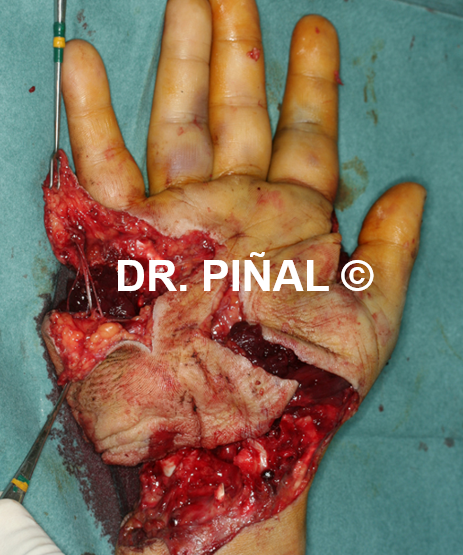
As a first stage, Dr. Piñal proceeds to the reconstruction by microsurgery of the tendons of the sliced area, as well as its nervous and vascular systems. In the analyzed situation, the affected nerves are mixed ones, that is, they govern both sensitivity and mobility, so – in this initial phase – the patient recovers the first, but not yet the second.
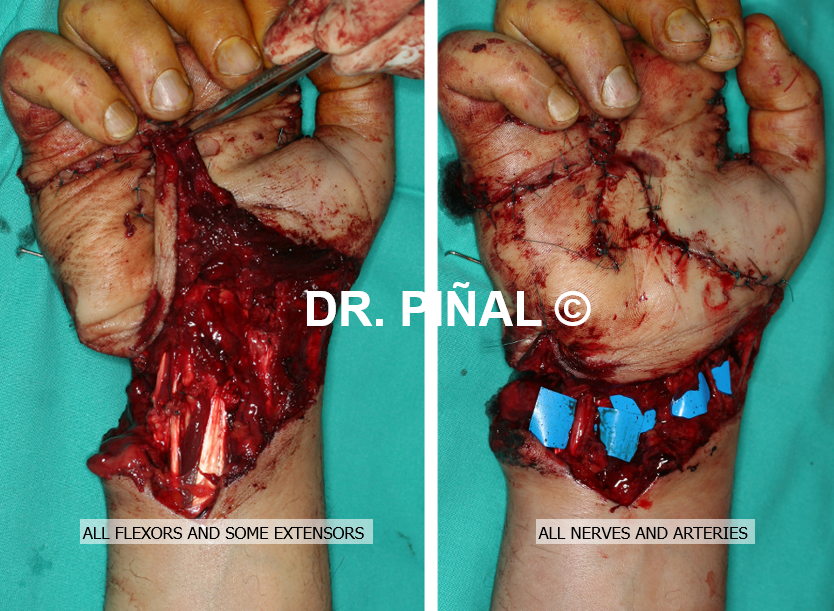
Preliminarily, a temporary coverage is placed, which is then removed and, after a radical debridement of the space subjected to trauma (that is, the elimination of dead tissue), a free flap of vascularized skin from the patient himself is transferred. Said healthy skin is taken from the lateral part of the forearm and reconnected in the affected area in a microvascular manner, that is, including the microsurgical reconnection of artery and vein.
Subsequently it is necessary to address the non-mobility caused by the absence of muscle mass. In an intermediate stage, while the patient advances in his recovery, an anti-claw splint is placed, which recreates the movements of the affected muscles avoiding a fixed stiffness of the hand.
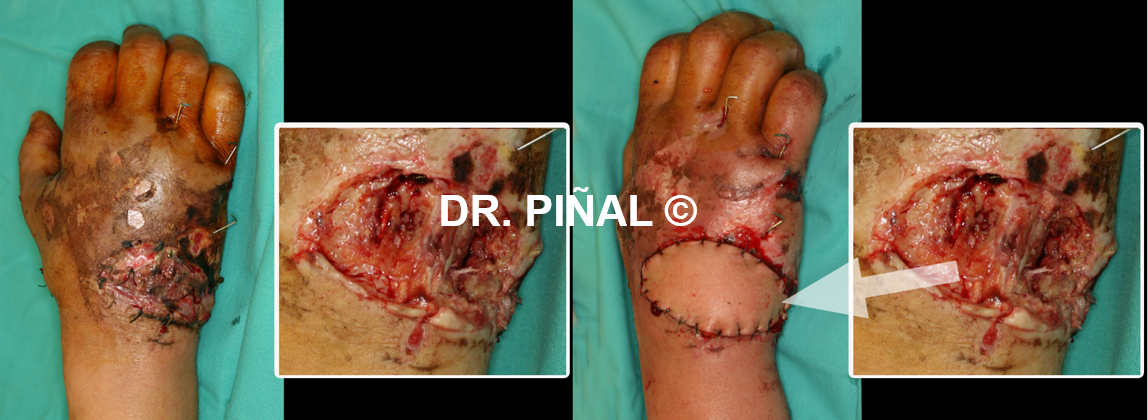
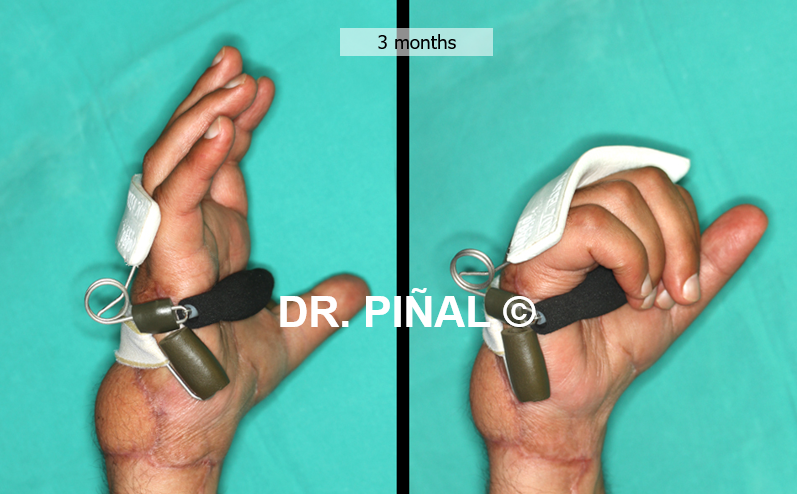
As can be seen in the image below, seven months after the accident, Dr. Piñal performs a tendon transplant or tendon transfer, with which various muscles and tendons, recovered or not affected, see their original function varied through surgery. This is possible since there are functions exerted by several tendons that can be fulfilled by a smaller number of them. Take for example the case of the three extensor tendons of the wrist whose work, not in an optimal but sufficient level, can be executed by just one.
The maximum post-trauma period before approaching an intervention as described is approximately 18 months, since from this limit the muscle receptors are ‘turned off’, no longer able to receive and process the orders sent by the nervous system.
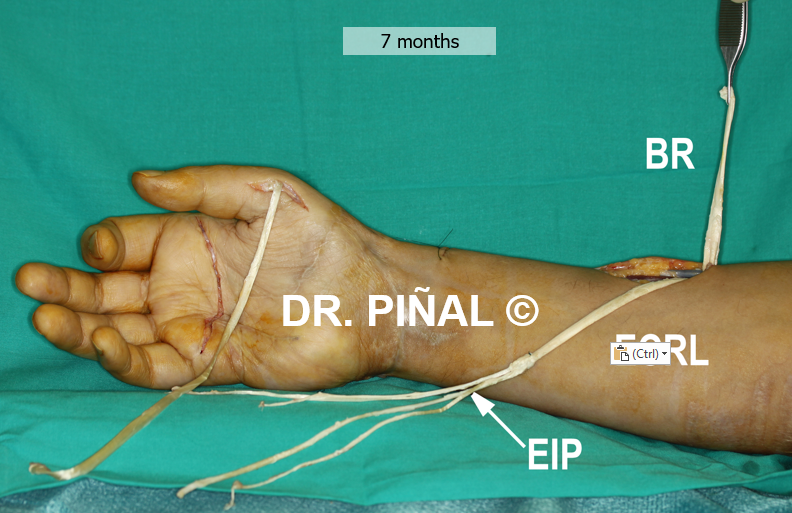
This part of the procedure lasts about 6 hours, although it changes depending on the technical expertise and experience of the surgeon and his support team. In an operation like this, the variable ‘time’ is critical due to the rapid and progressive deterioration of the muscle when it does not receive oxygen supply or it is below its needs.
The results
The patient regains both the sensitivity and the ability to move the hand affected in the accident. This recovery occurs also with a limited aesthetic impact.
Part of the marks and ‘signals’ of tension that are seen in the attached images -recorded 6 years after the procedure- are due not to surgery itself, but to the internal anatomical reconfiguration of the limb.
 es
es en
en fr
fr it
it ru
ru zh-hans
zh-hans
